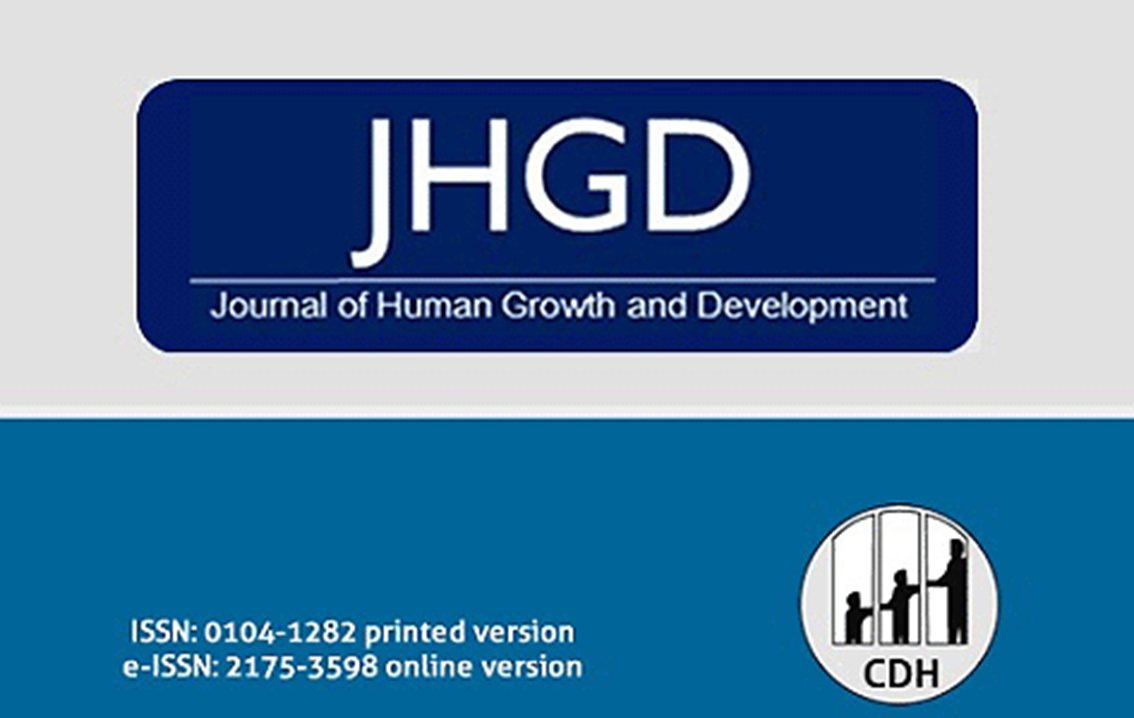Maternal perception of the child’s nutritional status from the perspective of adjusted residual analysis
DOI:
https://doi.org/10.7322/jhgd.v30.11102Keywords:
maternal behavior, nutritional status, child, overweight,, obesityAbstract
Backgroung: The maternal perception of the nutritional status of their children has several important social factors in its composition and it can be important in determine quality of children’s food.
Objective: To assess social factors influencing maternal perception of her children´s nutritional status.
Methods: Cross sectional study with school children from 6 to 10 years from a public school in São Paulo, Brazil. The data was obtained through a structured questionnaire applied to mothers and through children’s body mass index. Associations between variables were analyzed by the Qui-square test and
by the adjusted residues analysis, with 5% of significance. The agreement between maternal perception and nutritional status was assessed through the Kappa test.
Results: We found incorrect perception in 45.8% of cases, from which 98.2% were underestimation, with 80% of underestimation for overweight children. We found poor and slight agreement for all cases. Adjusted residuals pointed eutrophic underestimation; better maternal perception for
the obese; better perception for mothers that attained middle and high school levels; underestimation for eutrophic boys and correct perception for eutrophic girls. Single mothers and
those who do not work outside tended to underestimate their eutrophic children.
Conclusion: We found poor agreement for almost all cases, with exception to mothers of girls and those that do not work outside. A correct perception was related positively with lower education levels, being worse for mothers without a partner and for those who do not work outside. Mothers of girls, compared to mothers of boys, had a more accurate perception.
Downloads
References
Rivera, J., de Cossío, T., Pedraza, L., Aburto, T., Sánchez, T. and Martorell, R. Childhood and adolescent overweight and obesity in Latin America: a systematic review. Lancet Diabetes Endocrinol. 2014; 2(4):321-332. DOI: https://doi.org/10.1016/s2213-8587(13)70173-6
Costa L, Rubio KL, Lopes SMA, Tanouye ATA, Bertolini SMMG, Branco BHM. Effects of 12 weeks of interdisciplinary interventions on behavioral and eating parameters of adolescents with overweight or obesity. J Hum Growth Dev. 2019; 29(2): 177-186. DOI: http://doi.org/10.7322/jhgd.v29.9417
Juarez Mendez V. Características maternas e infantiles asociadas a obesidad en lactantes menores de un año de edad del norte de méxico. Nutr Hosp. 2019; 7; 36(1): 244. DOI: http://dx.doi.org/10.20960/nh.2388
Francescatto C, Santos NS, Coutinho VF, Costa RF. Mothers’ perceptions about the nutritional status of their overweight children: a systematic review. J Pediatr (Rio J). 2014; 90(4): 332-43. DOI: https://doi.org/10.1016/j.jped.2014.01.009
Bhadoria A, Sahoo K, Sahoo B, Choudhury A, Sufi N, Kumar R. Childhood obesity: Causes and consequences. J Family Med Prim Care. 2015; 4(2): 187-92.
DOI: https://doi.org/10.4103/2249-4863.154628
Keller K, Olsen A, Kuilema L, Meyermann K, Belle C. Predictors of parental perceptions and concerns about child weight. Appetite. 2013; 62: 96-102. DOI: https://doi.org/10.1016/j.appet.2012.11.016
Baughcum A, Chamberlin L, Deeks C, Powers S, Whitaker R. Maternal Perceptions of Overweight Preschool Children. Pediatrics. 2000; 106(6): 1380-6. DOI: https://doi.org/10.1542/peds.106.6.1380
Medeiros AJ, Palmeira PA, Lima JS, Cardoso VVBP. Longitudinal monitoring of nutritional status of schoolchildren at a public school. J Hum Growth Dev. 2020; 30(2): 209-215. DOI: https://doi.org/10.7322/jhgd.v30.10367
Novaes J, Lamounier J, Franceschini S, Priore S. Fatores ambientais associados ao sobrepeso infantil. Rev. Nutr. 2009;22(5):661-673. DOI: https://doi.org/10.1590/s1415-52732009000500007
Downloads
Published
Issue
Section
License
Copyright (c) 2020 Gustavo Carreiro Pinasco

This work is licensed under a Creative Commons Attribution 4.0 International License.






